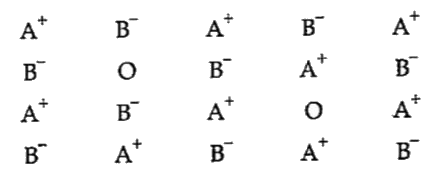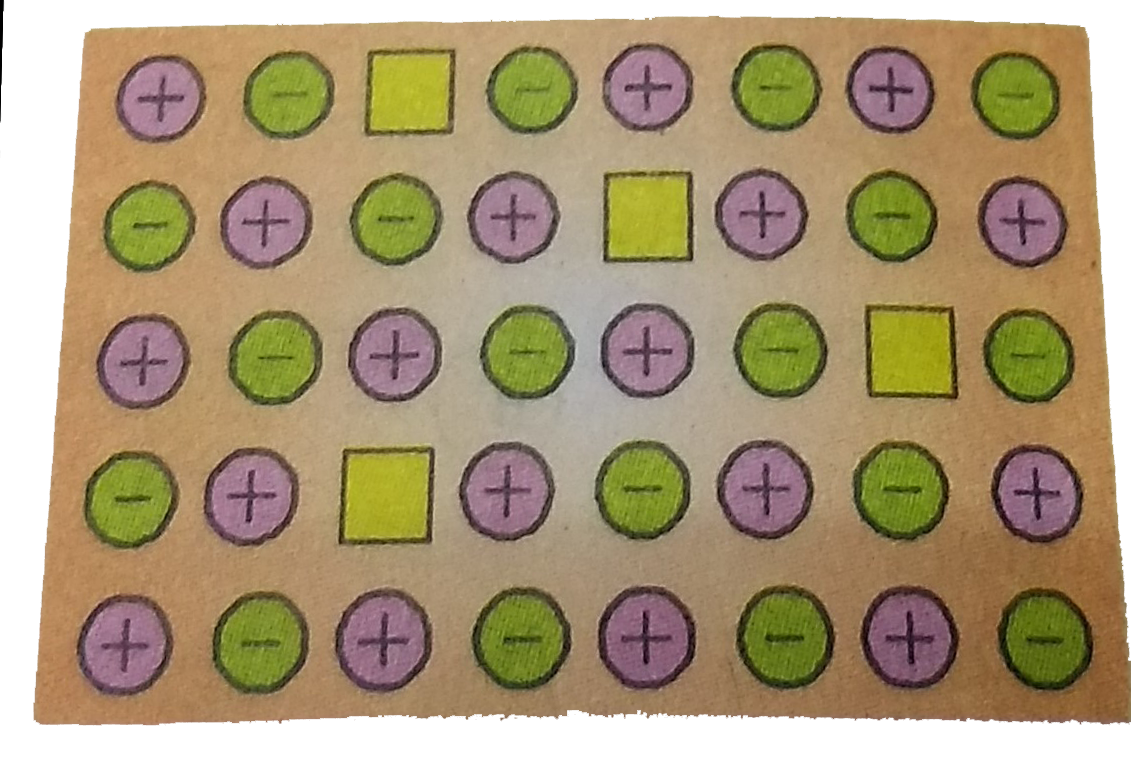What is the non-stoichiometry defect in the crystals ?
Step-by-Step Solution:
1. Definition of Non-Stoichiometry Defect:
Non-stoichiometry defects in crystals refer to situations where the ratio of positive ions (cations) to negative ions (anions) in a compound deviates from the ideal stoichiometric ratio as dictated by its chemical formula. This means that the actual composition of the crystal does not match the expected formula.
2. Understanding Ideal Chemical Formula:
For example, in sodium chloride (NaCl), the ideal stoichiometric ratio is 1:1, meaning one sodium ion (Na⁺) pairs with one chloride ion (Cl⁻). In a perfect crystal, you would expect to find equal numbers of Na⁺ and Cl⁻ ions.
3. Example of Non-Stoichiometry:
If we consider a scenario where there are 6 Na⁺ ions surrounded by only 4 Cl⁻ ions, the ratio of Na⁺ to Cl⁻ becomes 6:4 (or 3:2), which deviates from the expected 1:1 ratio. This discrepancy indicates a non-stoichiometry defect.
4. Types of Non-Stoichiometry Defects:
- Metal Excess Defect: This occurs when there are excess cations in the crystal structure. These excess cations can occupy interstitial sites (spaces between the lattice points) rather than the lattice points themselves. To maintain electrical neutrality, electrons may occupy the interstitial sites as well.
- Anion Vacancies: In this case, some anions may be missing from their lattice sites, creating vacancies. The absence of these negative ions can be compensated by the presence of electrons trapped in these vacancies.
5. Metal Deficient Defect:
- Cation Vacancies: This defect occurs when some cations are missing from their lattice sites. The resulting positive charge deficiency can be compensated by nearby metal ions that may acquire additional positive charges.
- Extra Anions: In some cases, an extra anion may occupy an interstitial site, balancing the charge by influencing nearby metal ions.
Summary:
Non-stoichiometry defects in crystals involve deviations from the ideal ionic ratios in a compound, leading to various types of defects such as metal excess and metal deficiency, which can be characterized by the presence of excess cations, anion vacancies, cation vacancies, and extra anions.
Non-stoichiometry defects in crystals refer to situations where the ratio of positive ions (cations) to negative ions (anions) in a compound deviates from the ideal stoichiometric ratio as dictated by its chemical formula. This means that the actual composition of the crystal does not match the expected formula.
For example, in sodium chloride (NaCl), the ideal stoichiometric ratio is 1:1, meaning one sodium ion (Na⁺) pairs with one chloride ion (Cl⁻). In a perfect crystal, you would expect to find equal numbers of Na⁺ and Cl⁻ ions.
If we consider a scenario where there are 6 Na⁺ ions surrounded by only 4 Cl⁻ ions, the ratio of Na⁺ to Cl⁻ becomes 6:4 (or 3:2), which deviates from the expected 1:1 ratio. This discrepancy indicates a non-stoichiometry defect.
- Metal Excess Defect: This occurs when there are excess cations in the crystal structure. These excess cations can occupy interstitial sites (spaces between the lattice points) rather than the lattice points themselves. To maintain electrical neutrality, electrons may occupy the interstitial sites as well.
- Anion Vacancies: In this case, some anions may be missing from their lattice sites, creating vacancies. The absence of these negative ions can be compensated by the presence of electrons trapped in these vacancies.
- Cation Vacancies: This defect occurs when some cations are missing from their lattice sites. The resulting positive charge deficiency can be compensated by nearby metal ions that may acquire additional positive charges.
- Extra Anions: In some cases, an extra anion may occupy an interstitial site, balancing the charge by influencing nearby metal ions.
Non-stoichiometry defects in crystals involve deviations from the ideal ionic ratios in a compound, leading to various types of defects such as metal excess and metal deficiency, which can be characterized by the presence of excess cations, anion vacancies, cation vacancies, and extra anions.
Topper's Solved these Questions
- SOLID STATEBook:ICSEChapter:SOLID STATEExercise:EXERCISE (PART-II DESCRIPTIVE QUESTIONS) (SHORT ANSWER QUESTIONS)
Explore 37 Videos
- SOLID STATEBook:ICSEChapter:SOLID STATEExercise:EXERCISE (PART-II DESCRIPTIVE QUESTIONS) (LONG ANSWER QUESTIONS)
Explore 38 Videos
- SOLID STATEBook:ICSEChapter:SOLID STATEExercise:EXERCISE(PART-I OBJECTIVE QUESTIONS)
Explore 69 Videos
- SELF ASSESSMENT PAPER-8Book:ICSEChapter:SELF ASSESSMENT PAPER-8Exercise:QUESTIONS
Explore 11 Videos
- SOLUTIONSBook:ICSEChapter:SOLUTIONSExercise:MULTIPLE CHOICE QUESTIONS (Assertion and Reason based questions)
Explore 10 Videos
Similar Questions
What are non-stoichiometry defects in crystals ? Explain.
View SolutionExamiine the given defective crystal

(i) What type of stoichiometric defect is shown by the the crystal ?
(ii) How is the density of the crystal affected by this defect ?
(iii) What type of ionic substance show such defect ?
View Solution
Knowledge Check
Examine the given defected crystal

Answer the following questions:
What type of stoichiometric defect is shown in the crystal ?ASchottky defect, decreases, NaCl and KCl etcBFrenkel defect, increases, As and Si etcCSchottky defect, increases, As and Bi etcDFrenkel defect, decreases, NaCl, KCl etc
Which stoichiometric defect in crystals increses the density a solid?
View SolutionWhat type of stoichiometric defects are noticed in crystals?
View SolutionWhat is the effect of Schottky defect on the density of crystal ?
View SolutionSchottky defect in a crystal is observed when
View SolutionExplain the Schottky defects in stoichiometric crystals.
View Solution(i) What type of non stichiometirc point defect is responsible for the pink colour of LiCI?
(ii)What type of stochiometric defects is shown by NaCI?
View SolutionExamine the illustration of a portion of the deffective crystal and answer the following question :
(a) What are these type of vacancy defects called ?
(b) How is the density of a crystal affected by these defects ?
(c) Name one ionic compound which can show this type of defect in the crystalline state.
(d) How is the stoichiometry of the compound affected ?

View Solution